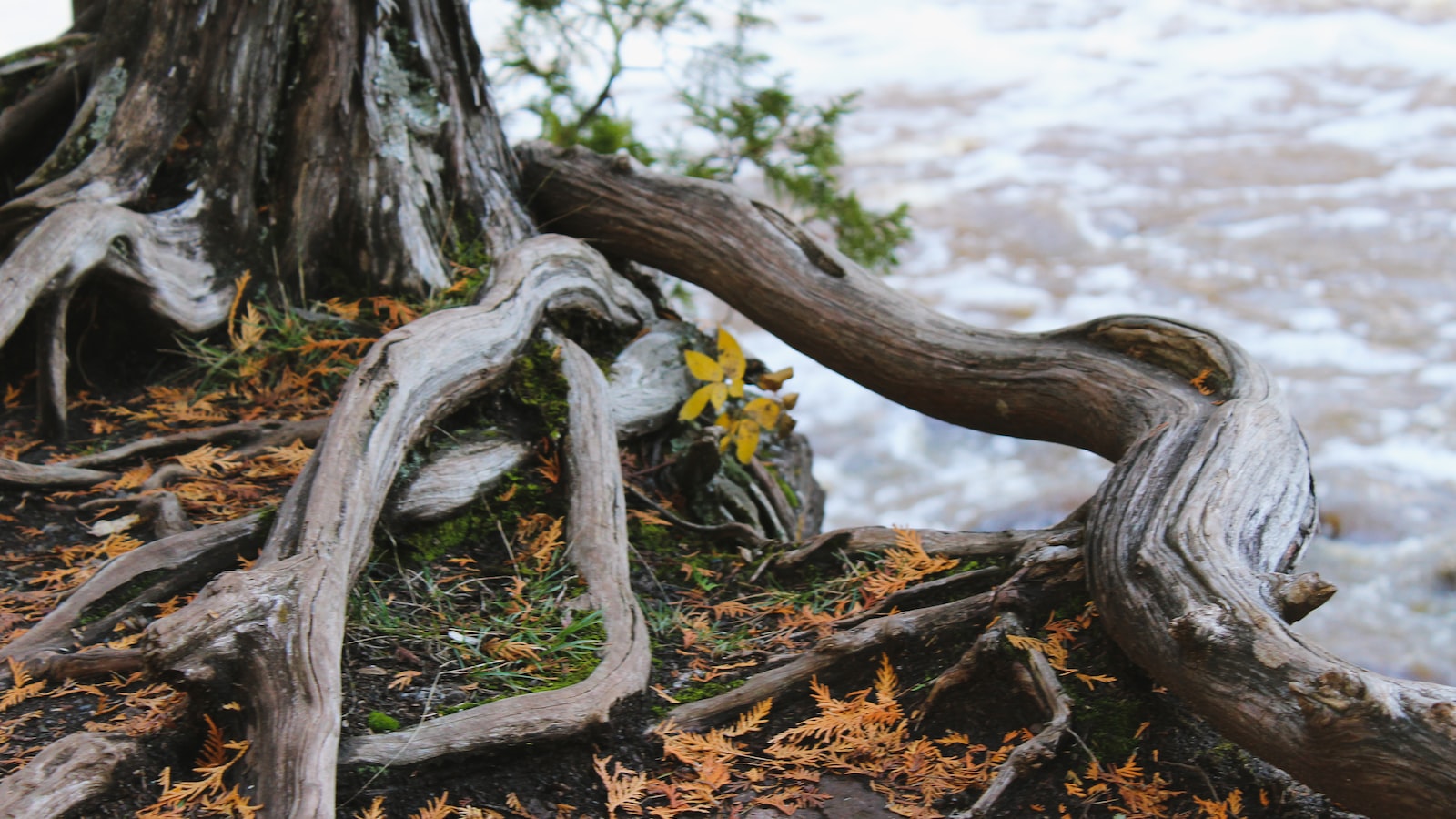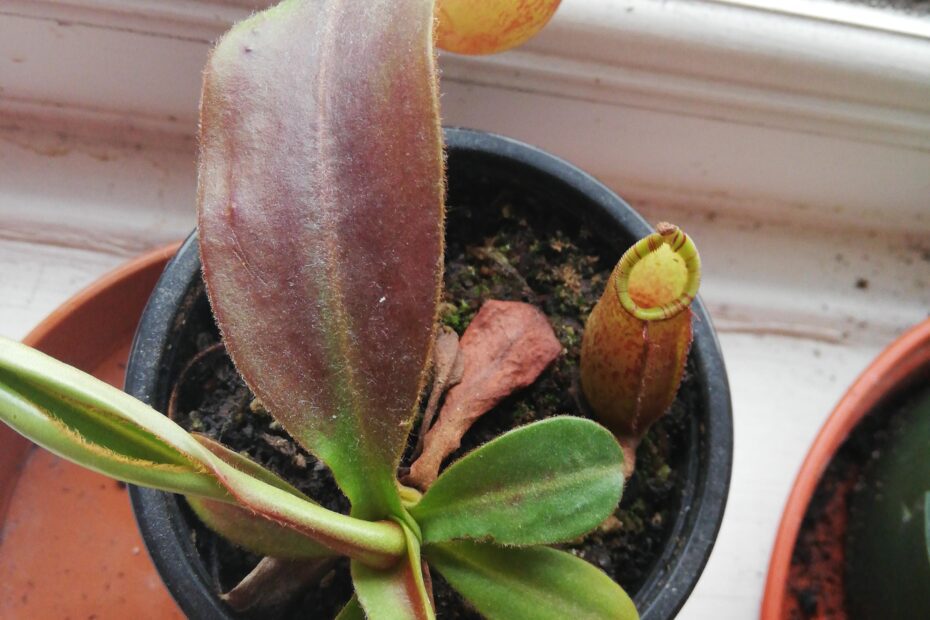The Hidden Shades: Unveiling the Enigma Behind Red-Hued Foliage
In the mesmerizing world of botanical wonders, there exists a vibrant tapestry of green that graces our gardens, windowsills, and parks alike. These emerald shades bear witness to the ever-constant dance between nature’s nurturing hand and the delicate needs of the plants we adore. Yet, amidst this lush symphony, an inexplicable marvel frequently unveils itself, leaving gardeners and enthusiasts alike baffled by nature’s enigmatic beauty that is the red-hued foliage.
As we immerse ourselves in the steadfast pursuit of gardening mastery, we often encounter a perplexing question: “Why are my precious plant leaves turning red?” Be it an enchanting maple tree donning fiery crimson or a delicate indoor orchid showcasing hints of passionate rouge, this unearthing of untamed colors leaves us yearning for answers.
In this article, we embark upon an artistic expedition deep into the heart of this botanical conundrum. With a neutral stance, we aim to tear back the secrets veiled by these enchanting shades, uncovering the mysterious forces at play behind this seemingly fantastical metamorphosis. Together, we shall unravel the untold tales hidden within the changing hues, understanding the biological, environmental, and even emotional factors contributing to this astounding phenomenon.
While the premise remains simple—the changing of a leaf’s tone—our adventure lacks simplicity. Prepare to delve into the wide-ranging facets of nature’s palette, exploring the role of pigments, environmental stressors, nutrient deficiencies, and even the plant’s very DNA. Through our exploration, we hope to piece together the fragmented puzzle, discovering the underlying causes and remedies to put even the most curious of horticulturists at ease.
So, dear reader, join us on this captivating expedition as we breathe life into the crimson secrets surrounding our beloved flora. Let us embrace the awe-inspiring beauty that unfolds before our very eyes, welcoming the transformative wonders of nature’s kaleidoscope with open minds and eager hearts.
Identifying the Causes Behind Red Leaves: Unraveling the Colorful Mystery
Red leaves can be a stunning addition to any garden or houseplant collection, but they can also be a cause for concern. If you’ve found yourself pondering over why your plant leaves are turning red, fear not! There are a variety of factors that can contribute to this colorful mystery.
First and f
oremost, red leaves can be a natural part of a plant’s life cycle. Some plants naturally develop red leaves as the seasons change, signaling the approach of colder temperatures. This is especially common in trees and shrubs, such as the iconic red maple tree. It’s simply nature’s way of preparing for winter and shedding old leaves.However, if your plant is not one that naturally changes leaf color, there may be other causes at play. One possibility is too much sunlight. Plants that are exposed to excessive sunlight can develop red leaves as a form of sunburn. This is why it’s important to provide proper shading or move your plant to a more suitable location. Another potential cause could be nutrient deficiencies, particularly a lack of phosphorus. Without sufficient phosphorus, plants may struggle to produce green chlorophyll, resulting in red leaves. Consider using a balanced fertilizer to ensure your plant has all the necessary nutrients.
To help you further understand the causes behind red leaves and how to address them, here are some features or tips to keep in mind:
| Description | |
| Sunlight Exposure | Ensure your plant is getting the right amount of sunlight. Too much sunlight can lead to red leaves. |
| Nutrient Deficiencies | Check if your plant is lacking essential nutrients, such as phosphorus. Use a balanced fertilizer to address deficiencies. |
| Watering Habits | Overwatering or underwatering can cause stress to plants, leading to red leaves. Find the proper watering schedule for your specific plant. |
By identifying the underlying causes behind your plant’s red leaves and taking the appropriate steps to address them, you can help your beloved greenery regain its vibrant color and thrive once again. Remember, each plant is unique, so it’s essential to observe and cater to its specific needs. With a little patience and care, you’ll soon unravel the colorful mystery behind red leaves!

– Understanding the Role of Environmental Factors in Red Leaf Discoloration
Red leaf discoloration in plants can be a puzzling sight for gardeners and plant enthusiasts. If you’ve ever wondered why your plant leaves are turning red, it’s important to understand the role of environmental factors in causing this phenomenon. Environmental factors encompass a wide range of conditions that can affect plant health and pigmentation, and by understanding these factors, you can better diagnose and address the issue at hand.
| Features | Tips |
|---|---|
| Leaf Coloration | Observe the specific hue and pattern of redness on the leaves to identify if it is a natural reaction or a sign of distress. |
| Watering Practices | Ensure your plants receive adequate water, as both overwatering and underwatering can contribute to leaf discoloration. |
| Soil Analysis | Consider conducting a soil analysis to identify any nutrient deficiencies or imbalances that may be causing red leaf discoloration. |

– Nutrient Deficiencies: Uncover the Culprits and Restore Vibrant Greenery
Nutrient Deficiencies: Uncover the Culprits and Restore Vibrant Greenery
Is your once lush and vibrant greenery suddenly sporting red hues? Don’t fret, dear plant parent, as there might be a simple explanation for this stunning transformation. The answer lies within nutrient deficiencies, which can sabotage the health and vitality of your beloved plants. Let’s dive into the mysterious world of plant nutrition and discover why your plant leaves are turning red.
One potenti
al culprit behind the red tinge on your plant leaves is a lack of essential nutrients. Plants rely on a balance of nutrients, including nitrogen, phosphorus, and potassium, to thrive. When these key elements are lacking, various symptoms can arise, such as reddening or purpling of the leaves. To determine the specific nutrient deficiency affecting your plants, closely examine the region where the red appears. Reddish lower leaves often indicate a deficiency in phosphorus or potassium, while reddening at the leaf tips or edges may signify a nitrogen shortage.| Features | Tips |
|---|---|
| Brown leaf edges | Tip 1: Check soil moisture levels. Overwatering or underwatering can lead to nutrient imbalances. Tip 2: Consider adjusting your watering schedule or improving drainage for better nutrient uptake. |
| Purplish or reddish leaves | Tip 1: Conduct a soil test to identify nutrient deficiencies accurately. Tip 2: Introduce organic fertilizers or nutrient-rich compost to enhance the soil’s nutrient content. |
| Stunted growth | Tip 1: Ensure proper sunlight exposure for your plants. Lack of sunlight can impede nutrient absorption. Tip 2: Consider using balanced, slow-release fertilizers to gradually provide the necessary nutrients over time. |

– Pest Infestations and Diseases: Protecting Your Plants from Leaf Reddening
Pest Infestations and Diseases: Protecting Your Plants from Leaf Reddening
Plants are like silent communicators, subtly showing us their health through the vibrant colors of their leaves. However, if you’ve noticed your beloved greenery turning shades of red, it might be a sign of a problem that needs attention. Leaf reddening can be caused by various factors, such as environmental stress, nutrient deficiencies, and even pest infestations or diseases. In this post, we will focus on the latter, exploring the pesky pests and troublesome diseases that can leave your plants blushing.
<;p>
Pest infestations can wreak havoc on your plants, causing leaf reddening and a decline in their overall health. Some common culprits include aphids, <a href="https://up-gardening.com/how-to-fix-a-broken-money-tree/" title="How to Fix a Broken Money Tree">spider mites</a>, and fungal infections. These unwelcome guests feed on the sap within the leaves, leading to a nutrient imbalance that manifests as red discoloration. Vigilance is key in protecting your plants from these pests. Regularly inspect your plants, paying close attention to the undersides of leaves, where pests tend to hide. If you notice any signs of infestation, such as stunted growth, curled leaves, or tiny webs, taking prompt action is essential. Consider using natural remedies or organic insecticides to combat these invaders and minimize the damage they can cause.
</p>
<table style="width:100%">
<tr>
<th><strong>Features</strong></th>
<th><strong>Tips</strong></th>
</tr>
<tr>
<td>Aphids - Tiny, pear-shaped insects</td>
<td>Attract beneficial insects like ladybugs to your garden</td>
</tr>
<tr>
<td>Spider Mites - Minuscule arachnids</td>
<td>Regularly mist your plants to create a less favorable environment for mites</td>
</tr>
<tr>
<td>Fungal Infections - Examples: powdery mildew, rust</td>
<td>Improve air circulation around plants by spacing them appropriately</td>
</tr>
</table>Frequently Asked Questions
Q: Why are my plant leaves turning red?
A: Nature’s Palette – Unraveling the Crimson Mystery
Q: What causes this sudden red transformation in plant leaves?
A: Nature’s Hidden Secrets – The Crimson Conspiracy Exposed
Q: Is there a way to prevent or reverse this reddening phenomenon in my plants?
A: Unmasking the Crimson Enigma – Unveiling Solutions for Vibrant Greenery As the vibrant tapestry of nature unravels around us, we find solace in the evergreen leaves that breathe life into our surroundings. But what if this harmonious symphony of hues takes an unexpected twist, and green gives way to a captivating crimson? It is a sight that enthralls and perplexes in equal measure – why are my plant leaves turning red?
Seeking ans
wers amidst the crimson mysteries, we waltz through the secrets of botanical biology. Our journey through the dance of chlorophyll and pigments reveals that red leaves are not merely a whimsical anomaly but a poignant reflection of a plant’s inner workings. As sunlight dances upon foliage, it triggers an intricately orchestrated transformation, summoning pigments other than green to take center stage.Like a painter, Mother Nature delicately brushes her canvas with the hues of chemistry. In moments of exquisite variation, the leaves defy their chlorophyll majesty and embrace the vibrant charm of crimson, ruby, and burgundy. But these captivating colors, as enchanting as they may be, often serve as messengers, conveying whispers of distress that echo through the plant’s veined corridors.
At times, this fiery transformation acts as a battle cry, heralding the arrival of autumn. The red foliage signals the final act in the seasonal symphony, bidding the lush green farewell before the curtain falls. Nature, it seems, has its own way of mourning the impending hibernation, painting farewell notes with a brush of red.
Yet, in the
woven tapestry of red, truths that whisper imminent danger emerge. For the leaves that turn red out of season, they tell a tragically beautiful tale of disease, stress, or unrequited love from the sun’s warm embrace. Nutrient deficiencies, drought, excessive sunlight, or even menacing pests can all orchestrate this chromatic distress, leaving us with a perplexing canvas of fiery foliage.So, as we gaze upon these scarlet whispers of nature’s hidden turmoil, let us view it not as a spectacle to ponder, but rather a call to action. For in their vulnerability, plants implore us to listen, to tend, and to heal. By nurturing the soil beneath their roots and showering them with care, we can steer the symphony back to its harmonious melody of vibrant greens and tranquil shades.
In this delicate realm where chlorophyll reigns supreme, every crimson leaf holds a story. It whispers the language of resilience, of survival, and of the intertwined lives in the intricate dance of nature. For within the magnificent red hues, we find not only beauty’s lingering embrace but also an unspoken plea to cherish the miraculous world of flora that surrounds us.
- When to Put Weed and Feed on Lawn in Michigan - October 16, 2023
- When to Fertilize Potatoes Plants - October 16, 2023
- Can You Plant Clover in the Spring - October 16, 2023
Contents
- 1 Identifying the Causes Behind Red Leaves: Unraveling the Colorful Mystery
- 2 – Understanding the Role of Environmental Factors in Red Leaf Discoloration
- 3 – Nutrient Deficiencies: Uncover the Culprits and Restore Vibrant Greenery
- 4 Nutrient Deficiencies: Uncover the Culprits and Restore Vibrant Greenery
- 5 – Pest Infestations and Diseases: Protecting Your Plants from Leaf Reddening
- 6 Pest Infestations and Diseases: Protecting Your Plants from Leaf Reddening
- 7 Frequently Asked Questions

